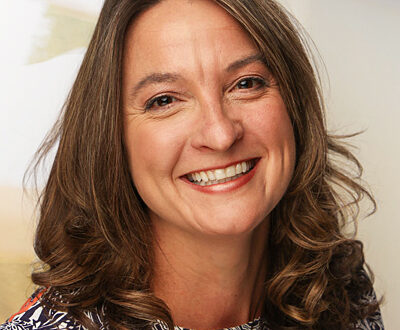What Does Photo Estimating Mean for the Collision Repair Industry?

Thursday, 07 July 2016 17:22
Featured in AUTOBODYNEWS
Photo estimating is the newest hot topic in the collision repair industry, causing quite a stir after Pennsylvania, Virginia and Delaware passed laws allowing insurers to write estimates based on photos of vehicle damage submitted by the insured. Advocates of photo estimating praise its convenience while those in opposition are concerned about supplement increases and its impact on the reputation of collision repair facilities.
So how does photo estimating impact shops, consumers and insurance companies? To find out what this new trend really entails, Autobody News spoke with CJ Przybyl, president of Snapsheet; Aaron Schulenburg, executive director of SCRS; Dan Risley, executive director of ASA National; and Tony Lombardozzi, president of CCRE. These industry leaders shared their perspectives on photo estimating to help shops understand how this will impact business going forward.
The consensus on the benefits of photo estimating was that it offers convenience for consumers, providing “the option to get an estimate on their own time,” according to Przybyl.
Schulenburg expanded on that idea, stating, “The perceived benefit from consumers is that it would increase convenience and reduce time spent going to a professional repair facility for a physical inspection. Many consumers, especially those in younger generations, are looking for mobile options that create increased efficiencies. While some claims settlement processes that avoid a physical inspection may appear to provide the advantage of convenience to consumers interested in settling their claim quickly, these same processes can lead to lower appraisals from insurance companies and claims settlements that don’t reflect the cost of repairs. The average consumer would likely be unaware of such deficiency until they entered into the repair process. Consumers are best served by a process that protects them with thorough diagnosis of damage at the onset of the claim and repair process.”
Risley, whose past career with Allstate provides a global perspective on this conundrum, likened photo estimating to drive-in appraisals. “With a drive-in estimate, they only write the damage they can see, and this can be more convenient for the customer, but a full estimate requires complete disassembly of the vehicle,” he said. “The key caveat is ensuring that the customer understands that the photo appraisal is a preliminary estimate and that their vehicle will require a full teardown for an accurate estimate.”
When it comes to the drawbacks of photo estimating, Lombardozzi fears it could lead to a lessening of the actual cash value of the loss because a photo estimate prevents the ability to see actual damage, such as gaps and suspension. “We need a physical inspection to see the necessary repairs, and consumers can only recuperate the loss if they repair the vehicle, but they aren’t required to get it repaired and may refrain from doing so based on the belief that the damage is minimal and only cosmetic.”
Schulenburg also expressed concerns over possible complications with the quality of settlements resulting from photo-based appraisals. “The process fails to account that consumers are generally unfamiliar with the damage evaluation process and what would represent a fair or comprehensive damage analysis. Further, physical inspections allow for customers to be notified if the damage incurred inhibits the safety of the vehicle or impacts vehicle functionality, something that one has less opportunity to address in a photo estimate.”
As evidence of these safety concerns, Schulenburg referred to the 2015 repeal of a similar measure in Massachusetts that only remained in effect for 14 months. According to Schulenburg, the repeal was “Based on concerns that the process could result in inaccurate appraisals and provided a way around the MA requirement that vehicles with at least $1500 in damage were personally inspected by an appraiser.”
Risley pointed out, “Photo estimating is less accurate than drive-in estimates, and in this case, a photo is worth a lot less than 1,000 words. There is a higher potential for fraud because consumers could potentially manipulate angles to take advantage of the system. If the consumer is not educated about the accuracy of photo estimating, it will likely create distrust if the shops estimate is significantly higher than the insurance companies’ estimate. It’s important to educate the consumer on the front end so they understand the process and eliminate potential friction and confusion on the back end.”
For Przybyl, the drawback lies in the fact that, “Photo estimating is a lot harder than it seems. Carriers may find huge gaps in their technology and the ability to service a customer when nobody is there in person. If photo estimations are not done timely with clear communication and proper metrics, it can be detrimental to a carrier.”
Conversely, Przybyl observed that customers are demanding photo estimating because it is fast and simple. “A customer who is happy during a claim is less likely to churn,” he stated. “When carriers give their customers what they want, satisfaction goes up. Customers have accepted photo and virtual estimating much faster than carriers expected, so there is a lot of work to do to catch up! After producing over 250,000 photo-based estimates, we have found that photo estimating also adds huge operational benefits to insurance carriers. Our vehicles are regularly physically re-inspected by field inspectors and score 98% on accuracy. The reality is that if a car is not torn down, there is no difference between a photo inspection and an in-person inspection.”
Looking at the impact on the insurance industry and consumers, Schulenburg believes that photo estimating “Certainly provides advantages that offer greater ability to mitigate claims costs and loss adjusting expenses. It also provides a greater advantage to limit damage identification with the hopes that the consumer elects not to repair the vehicle, and thus avoid fully indemnifying the insured loss. It also appears to offer the opportunity to take advantage of consumers’ limited scope of understanding of collision repair requirements in the first place, under the auspices of convenience.”
Lombardozzi agreed, saying, “Photo estimates allow the insurer to under-indemnify losses, and it will be used by consumers who want things easy and believe their insurance companies will take care of them.”
Additionally, Lombardozzi sees this as a way for insurance companies to exert more control over repair payments. “If the shop finds more damage than the photo estimates, they’ll have to create a free supplement to identify necessary repairs, but this should have been done at the beginning of the process! Now, shops are doing the appraiser’s work at no charge, so it definitely gives the insurers more control over expenditures, but it will increase the number of supplements. Currently, we write supplements for 70% of jobs, and I wouldn’t be surprised to see that go up to 100%. Insurance companies claim that photo estimating helps keep premiums down, but I haven’t seen any proof of that, and we all know the insurance industry wouldn’t spend the money to fight for this in legislation if it wasn’t benefitting them.”
Risley agreed that the less accurate nature of photo estimates will create a “dynamic negative impact on supplements and will increase the number of days to repair a vehicle, leading to increased friction between shops and insurers.”
Schulenburg shared some of the same concerns. “Aside from the diminished quality of initial settlements, which has the likelihood of increasing supplements, and confusion of the disparity between insurer and repairer damage analysis, photo estimating also opens the door to other more contentious settlement techniques,” he said. “Desk reviews are certainly another avenue that often couple with photo appraisals and increase friction in the process. It is much easier to deny necessary repair costs in an attempt to mitigate claims expenses when you are not face-to-face with the consumer or the repair facility conducting the repairs.”
Continuing, Schulenburg noted, “Some major carriers have openly discussed in industry forums that information about an accident gleaned from a vehicle’s own systems, coupled with historic claims data, could potentially reduce the need for the traditional estimating process. It is our belief that the push for photo estimating and campaigns to repeal consumer protections offered by physical inspection requirements opens the door for settlement practices that produce much greater advantages to insurers interested in mitigating losses than they do to consumers in search of convenience.”
Przybyl believes photo estimating is “A good thing, and it doesn’t really impact much for the collision repair facility. At the end of the day, they will receive an accurate estimate and a car to repair. We have found that photo estimation does not impact the customer’s decision to repair the vehicle. In fact, most customers already have multiple estimates from repair facilities before they use the self-service photo option.”
When it comes to supplements, Przybyl suggested, “The supplement process can be significantly expedited by utilizing photos and services like Snapsheet. If a facility submits photo documentation and invoices, they can get approvals immediately and significantly decrease the time to get paid for the repairs. Repair facilities can actually use photo estimating themselves, and companies like Snapsheet offer the service of performing total loss option and condition reports to help shops avoid extra work that is heavily scrutinized for quality by insurance carriers.”
There is no debate that vehicles will, at times, require a physical inspection to ascertain the damage, and although these requirements vary by state, Przybyl confirmed, “Physical inspections are still required from time to time. Photo estimating enables carriers to have all of the information about that specific vehicle and repair in fewer than three days. From there, unique cases can easily be triaged to an in-person inspection as needed.”
According to Risley, insurance companies will need to impose limitations on when photo estimates are allowed. “My understanding is that a triage process for photo estimating will trigger a systemic alert to require a physical inspection in certain cases, such as when the car is not drivable. Of course, there will be a learning curve, but the intention is not to make life miserable for the collision repair industry–they want to make things easier for the consumer. The key to making this transition work smoothly is educating consumers.”
Educating consumers may seem difficult, but consumers are, after all, the reason photo estimating has become so trendy. Przybyl stated, “Consumers are demanding this method, and it just makes sense. Estimating by photos has been a standard practice for years in the industry; mobile technology just made it easier and involved the customer. With all the benefits of happier customers, lower cycle times, an optimized triage for every car, and the ability to provide estimates that are just as accurate as in-person inspections, it makes perfect sense that photo estimating is here to stay.”


